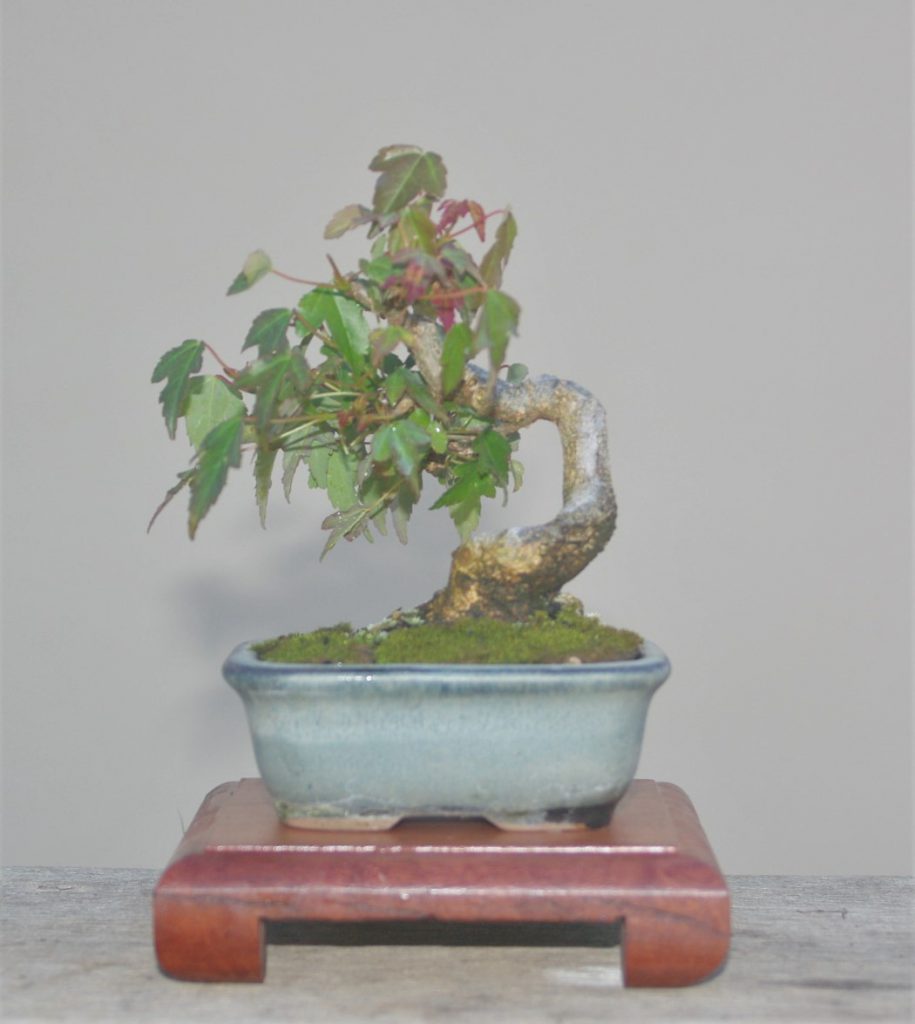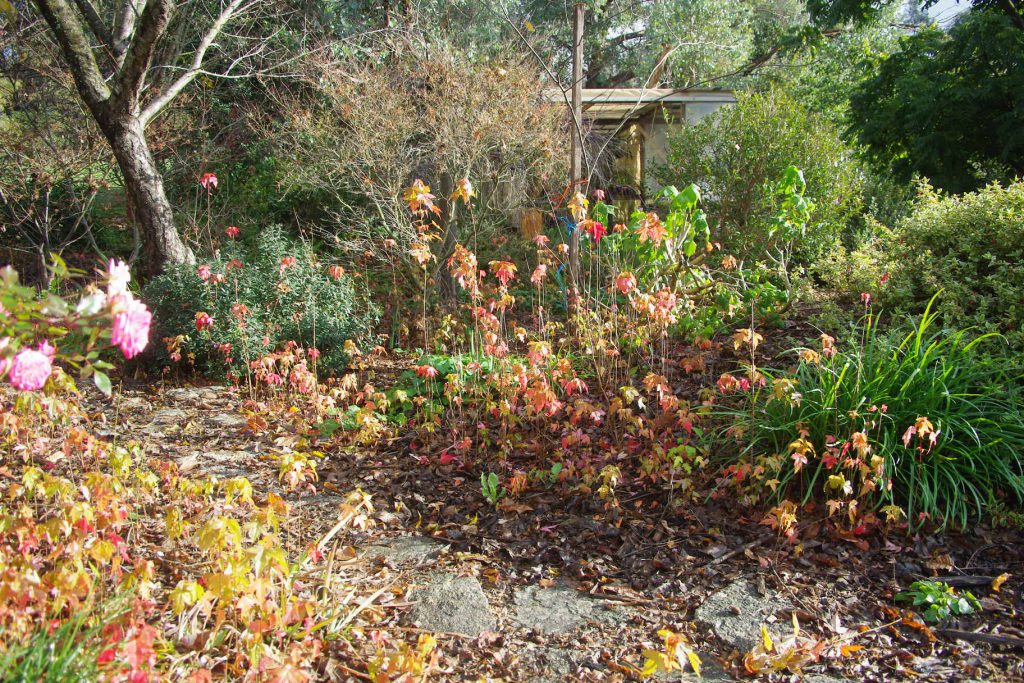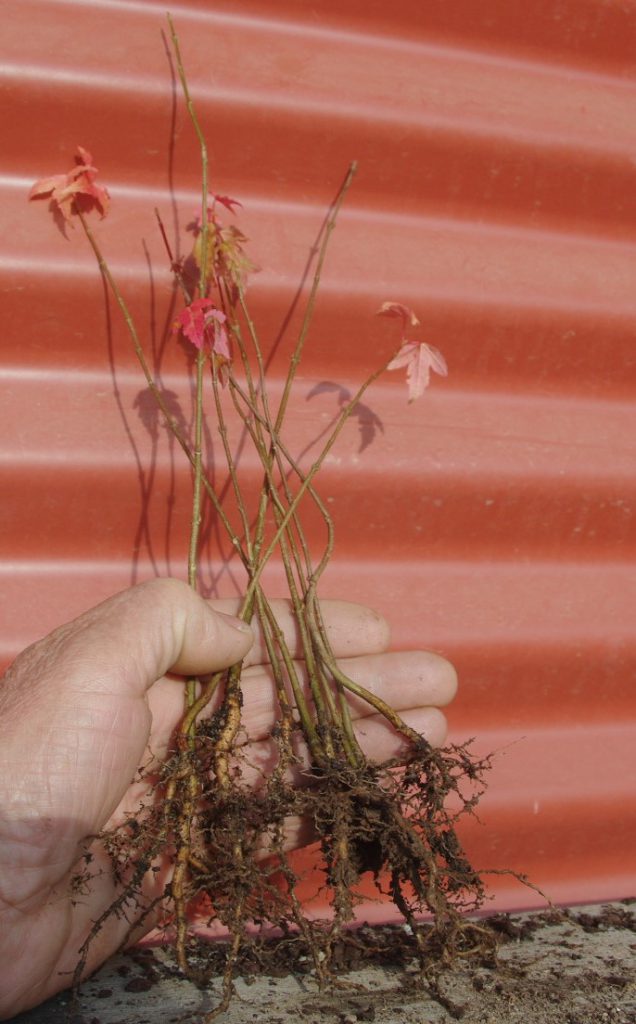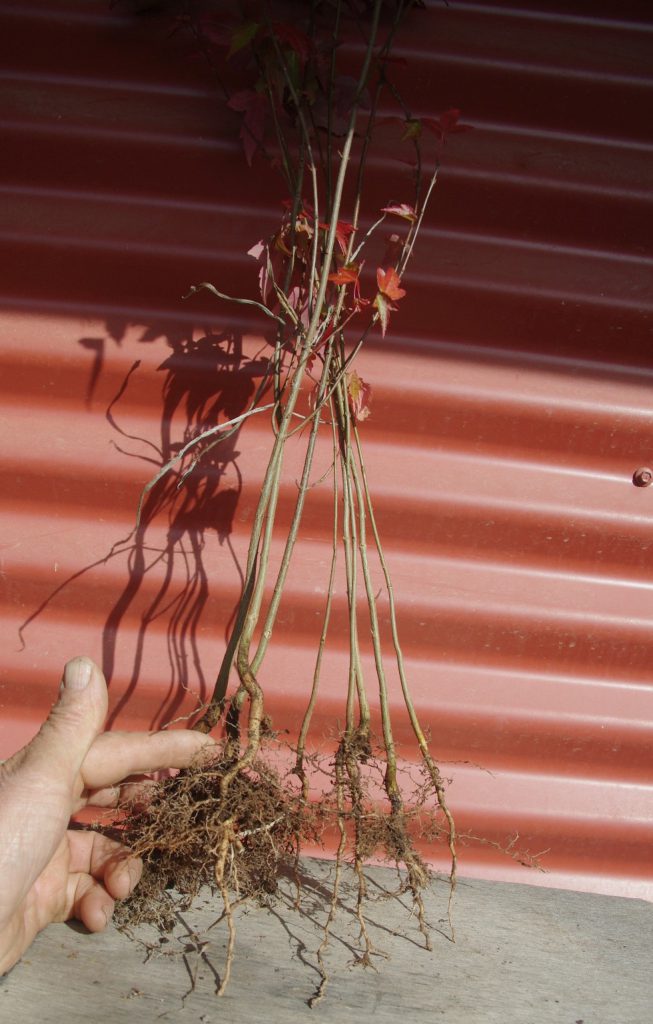Trident maples make some of the best root over rock bonsai. The roots grow and thicken quite fast so we can get a good result in less time than most species. Read more about Shibui Bonsai methods to develop root over Rock trident maples.
Continue readingMonthly Archives: June 2020
Use seedlings to add new roots
Nebari is the Japanese word that describes the roots we see on the surface. Those roots help us to see an older tree when we look at a bonsai so really good nebari is highly valued in bonsai.
Not all trees grow roots in all the right places. That can be frustrating for bonsai growers. An otherwise great bonsai is not quite as good because it lacks a few roots.
Continue readingBendy trunks for shohin maple bonsai
Lets face it. Straight bonsai trunks can be quite boring, especially on tiny shohin trees.
You can develop trunks with far more interest by wiring really small, flexible seedlings then growing them out to thicken the trunk.

Plaited trunks
Another technique that can create interesting texture in trident trunks is plaiting several seedlings together.
Plaiting does away with the need to tie the trunks together as the plaited trunks are already held firmly so they cannot push each other away.
Continue readingFused tridents
Many of us want thick trunks as quick as possible. Fusing tridents together is one way to achieve trunk girth.
Trees that are held tightly together while they grow will eventually fuse and merge together as the cambium layers unite. Eventually they will be grafted so well it can be hard to tell the trunk was once separate trees.
There are a number of different variations on fused trunks. Here I will look at just a couple that I have played with.
Continue readingBetter trident nebari
I have posted this technique before but to save you searching through old posts here it is again.
The principles of this technique are that most trees have the ability to grow new roots when circulation of sap is restricted. When the new roots emerge above the plate they are forced to grow out horizontally to the edges before diving deeper into the soil. This gives us a great start to a shallow, spreading nebari much prized in bonsai. As an added benefit, when trees rely solely on lateral roots the base of the trunk expands to give a buttressed trunk base which in turn gives your tree much better trunk taper. 2 great bonsai assets for the one simple technique.
Continue readingGroup planting
Arranging a number of seedlings together can turn otherwise unimpressive trunks into a group style bonsai with real appeal.
Continue readingTrident maple seedlings
Winter has arrived at Shibui Bonsai and the deciduous trees have (mostly) dropped their leaves for a winter sleep.
There have been increased mutterings from the Head Gardener about how many trident maple seedlings there are in her garden beds. Now is the time to start on new deciduous bonsai projects so we can kill 2 birds with the one stone.
You can see why she gets a bit cranky. Look how many seedlings have germinated in that garden bed among the real garden plants. At least we have managed to let them grow long enough that we now have a huge source of bonsai potential.

Trident maples are a great species for bonsai. They are a traditional Japanese favorite. They are resilient so great for beginners learning how to care for and manage bonsai. They grow fast so we can get a good start on a bonsai in just a few years, even quicker if you are happy with a stick in a pot bonsai.
This year I’m offering 4 different sizes of trident maple seedlings:
Small – trunks up to around 3 mm thick. Just 50c each

Medium – trunks from 3mm through to around 6mm (pencil thick) $1 each

Large – 6mm – 1 cm (around finger thick) $2 each
Some of these seedlings managed to evade detection last winter and have continued to grow taller and thicker so this year I will have a limited number of thicker trunks at $5 each.
Please note that thicker is not always better for bonsai. The thicker trunks rarely have any significant taper so they will require trunk chops which will leave large scars for a number of years. Larger trunks often have one or 2 thick roots that will also need attention.
I also have access to Japanese maple seedlings. These are slower to grow so all are in the small and medium size range and all $1 each. Japanese maples are a little less tenacious than the tridents so there are fewer of them available. Choices will be a little more limited so expect to get a mix of straighter and bendy trunks and a mix of small and medium trunks sizes when you order Japanese maples.
All these seedlings are sold as they come out of the garden. Roots may be trimmed lightly so the pack better but final root pruning is up to you. Some may have good lateral roots, others will have a single ‘tap’ root and few laterals. The good news is that maples respond really well to root pruning so just cut fearlessly. You will see some photos of how I cut roots of trident maples in the following posts. Even with very few roots survival rate is very high.
Email neil@shibuibonsai.com.au to enquire about maple seedlings or other Shibui Bonsai stock.
Due to state quarantine restrictions seedlings cannot be sent to West Australia, Tasmania or overseas destinations.
In the following posts I’ll outline some of the projects that I use trident maples seedlings for. Many of these projects will be suitable for other species too.
